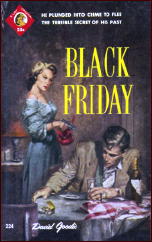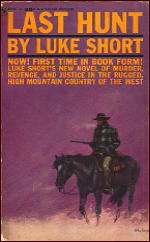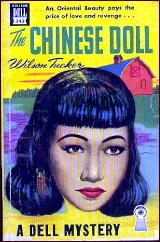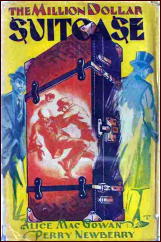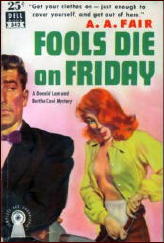REVIEWED BY MICHAEL SHONK:
HARRY O — Season 2, Part 2.
HARRY O. ABC / Warner Brothers. Season 2, Part 2. Midseason 1976, Thursday at 10-11pm. Cast: David Janssen as Harry Orwell, Anthony Zerbe as Lieutenant. K.C. Trench, Paul Tulley as Sergeant Roberts. Created by Howard Rodman. Executive Producer: Jerry Thorpe.

For the rest of the credits and Part One of this review please click here.
In 1975 Fred Silverman left CBS and became the head of the programming department of ABC. His midseason 75-76 changes to the ABC schedule had been a surprising success, and for the first time in the history of television ABC had a real chance to become the number one network in the ratings. ABC’s success would not be good news for Harry O.
Meanwhile, Harry O began 1976 with one of my favorite episodes:
“Mister Five and Dime.” (1/8/76): A female classmate (Glynnis O’Connor) of Lester Hodges (Les Lannom) is arrested for passing counterfeit money and she asks him for help. Lester, of course, turns to Harry.
Robert C. Dennis script featured a far-fetched plot and was laugh out loud funny. The script had enough twists to please Chubby Checker. What made the story so much fun was how Harry continued to get Trench into trouble with one federal agency after another. Director Richard Lang added some nice comedic touches to the jail scenes.
“Book of Changes.” (1/15/76): Jamie (Joanne Nail), a twenty year-old employee of a gambling club, witnesses the murder of her boss, Kate (Barbara Cason) during a robbery. Jamie runs, but does as Kate had earlier instructed her and delivers a tape addressed to: Harry Orwell, 1101 Coast Blvd, Santa Monica. On the tape the now deceased Kate hires Harry (Trench had told her Harry was the best PI in the business) to find her book of names she had for protection and for Harry to destroy it.
An average Harry O story with little mystery, less logic, and made watchable by Janssen and Zerbe. Harry’s love life takes a twist as Jamie tries to get Harry into bed and Harry resists due to the age difference. Director Russ Mayberry adds a nice visual touch to the cliché TV fight scene at the end with an overhead shot that gave us a great look at Harry’s home.
Trivia: Before he destroyed the book, Harry teased Trench by (pretending?) to read the name of K. C. Trench in the book. This is the only time K.C. was used, until then we wondered if Trench’s mother had named him Lieutenant.
“Past Imperfect.” (1/22/76): After spending eight years in prison, a conman turned killer (Tim McIntine) is out and looking for his old suitcase he had left with his now ex-partner (Susan Strasberg). Not knowing the old suitcase was important, she had left it behind in San Diego when she went straight and moved to L.A. Two mob-hired killers (Granville Van Dusen and Edward Power) and a mysterious man (David Opatoshu) also want the suitcase.
One of the worse episodes of the series as it was one stupid illogical scene after another. In between pointless scenes of violence, Harry beds another client, this time rudely rejecting Sue (Farrah Fawcett-Majors). Trench nearly gets the client killed in the most inept stakeout in Harry O history. And the solution to the mystery of what is in the suitcase is obvious to any student of mysteries.
“Hostage.” (2/19/76): Richard (John Rubinstein) robs a liquor store where drug dealers were scheduled to purchase a large amount of heroin. But the buyers were late, and instead of the cash there is only drugs in the safe. To make matters worse, cops spot the hold-up and one of them is shot, creating a hostage situation that is televised live. Harry has to find Richard’s junkie girlfriend (Ayn Ruymen) before the young man starts killing the hostages: Trench, a rich politician’s beautiful daughter (Collen Camp), and the drug-selling storeowner (George Loros).
A serious social problem (drugs) turned into a simplistic TV melodrama made entertaining only because of the cast. Paul Tulley as Roberts has more to do than usual and does it well.
“Forbidden City.” (2/26/76): A friend of Harry’s, PI George Dillard (Jerry Hardin) phones Harry for help (interrupting Harry and Sue’s “quality†time). Dillard asks Harry to meet him in Chinatown but is killed before he gets there. Harry learns how difficult it is for an “outsider†to find answers in Chinatown.
Entertaining mystery but with few surprises.
“Victim.” (3/4/76): A woman (Cynthia Avila) hires Harry to prove two of her co-workers (Michael Lerner and Cal Bellini) raped her.
Predictable as it sounds, the only scenes worth watching feature Harry, Trench and Roberts, who does a great Trench impression.
“Ruby.” (3/11/76): Prostitute and one of Harry’s contacts, Ruby (Margaret Avery) asks Harry for help. She has changed careers to Nurse after she took in her nephew (Stanley Bennett Clay) when his father died. Now the nephew is in jail for stealing a car and killing a cop in a car accident. In a wasted Charles Dickens inspired twist, a mobster (Joe Ruskin) has a gang of poor young men stealing cars for him.
Typical TV drama with some terrible dialog and obvious twists, but the episode was a good example of how PI (hunch player) Harry and cop (just the facts) Trench worked together, with Trench handling the “by the book†procedural side and Harry doing the PI “without rules†side.
https://www.youtube.com/watch?v=LmDZ0KqsZRg
“The Mysterious Case of Lester and Dr. Fong.” (3/18/76): Old rich man (Dean Jagger) gathers his family together to announce he has hired Harry to find out which one of them has threaten to kill him. He then dies…of natural causes. But one family member, Lester Hodges believes the old man was murdered. Lester convinces famous criminalist Dr. Creighton Fong (Keye Luke) to look into the death, and the good Dr. Fong finds evidence of poison.
Janssen had a reduced but important part in this backdoor pilot for a possible series featuring Lester and Dr. Fong. Trench was thrilled to work with the brilliant and respected Dr. Fong even if it meant having to deal with the aggravating Lester. Every time Fong found evidence that lead Lester to convince Trench to arrest a suspect, that suspect would die.
Lester and Fong were two supporting characters in need of a lead character strong enough to carry a series. By the end of this you will realize how much of the success of the characters Trench and Lester were due to Harry Orwell and David Janssen.
“Death Certificate.” (4/29/76): Young widow (Denise Galik) and her demanding mother (Ruth Roman) had filed a malpractice suit over the death of her husband. The widow had been beaten and ordered to drop the suit. They go to Harry for help. Harry finds little to help the malpractice suit, but all the threats and violence makes him (and Trench) wonder if the husband had been murdered.
As usual, we are more interested in what happens to Harry and those around him than the case itself. Harry’s car again fails him, this time with tragic consequences.
While David Janssen and the chemistry of the cast and characters are the primary reasons for us remembering Harry O as one of television’s best mystery dramas, the series had other virtues as well.
In Television Chronicles #10 (thanks again to Randy Cox for the copy), Ed Robertson quoted executive producer (who we today would call the series “showrunnerâ€) Jerry Thorpe about the different visual style of Harry O. “…I began to stage exclusively in forced perspective – that is, ‘up and down stage,’ as opposed to ‘stage left and stage right.’â€
This reduced the need for wide angles and master shots. It was a style Thorpe learned from Sidney Furie’s The Ipcress File (1965). Among the series directors, Richard Lang was the best at using the style and directed eighteen of the series forty-four episodes.
The writers, starting with Howard Rodman and followed by Robert Dozier, Michael Sloan and the rest understood the importance of David Janssen. They focused on how to exploit the talents of Janssen, and (in the Santa Monica episodes) the relationship between Harry and Trench by using a delightful mix of humor and situations hidden inside, at first Rodman’s darker nourish tales, then the ABC approved average TV melodramas. As a result, the series gave us two of TV’s most entertaining and memorable characters, Harry Orwell and K. C. Trench.
To the surprise of many, ABC cancelled Harry O at the end of the season.
Jerry Thorpe explained in Television Chronicles #10, “(Silverman) was looking for shows that he thought had the potential to be runaway hits. That was his philosophy. He didn’t want to settle for the ‘average.’ He wanted to take chances with shows that could really elevate the network’s standing-which was exactly what ABC needed to do at the time.â€
The article mentioned the series’ ratings had dropped by one point from the first season but was “still winning its time slot on a consistent basis.†It also noted Variety (April 1976) reaction that while Harry O was the best series of those cancelled, ABC felt Harry O’s ratings would not get any better.
It is a shame that because of ABC sudden rating success there was no longer a place for Harry O, and we never again got to watch Harry drink the last of Trench’s coffee or hear Trench scream “Roberts!†as he followed Harry out of his office to question the next suspect.
Now if only Warner Brothers would release the second season on DVD.
Links to the rest of my series of Harry O reviews:
GERTRUDE
SAN DIEGO
SEASON ONE, PART TWO
